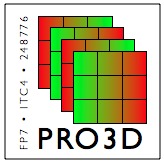Attaining Single-Chip, High-Performance Computing Through 3D Systems with Active Cooling
Coskun, Ayse Kivilcim and Atienza Alonso, David and Sabry Aly, Mohamed Mostafa and Meng, Jie.
Institute of Electrical and Electronics Engineers.
Three-dimensional (3D) stacking is an attractive method for designing large manycore chips as it provides high transistor integration densities, improves manufacturing yield due to smaller chip area, reduces wirelength and capacitance, and enables heterogeneous integration of different technologies on the same chip. Stacking, however, significantly increases the thermal resistivity and the on-chip temperatures. In fact, temperature is among the major manufacturing challenges for 3D design. Active cooling, where the chip is cooled through the liquid flowing in built-in microchannels or through a cold plate, has emerged as a viable cooling alternative for high-performance 3D manycore systems. Liquid cooling is more efficient in removing the heat in comparison to conventional cooling methods with heat sinks and fans. Nevertheless, the dynamically changing nature of workloads running on manycore systems require runtime techniques to enable energy-efficient, reliable, and high-performance operation of liquid-cooled 3D systems. This article focuses on the benefits and the challenges of 3D design, and discusses novel techniques to integrate predictive cooling control with chip-level thermal management methods such as job scheduling and voltage frequency scaling. The key message is that 3D liquid-cooled systems with intelligent runtime management provide an energy-efficient solution to designing future single-chip high-performance manycore architectures.
http://infoscience.epfl.ch/record/165525/files/MICRO2011-Coskun_Atienza_et_al-B8342d01.pdf
DOI: 10.1109/MM.2011.39

